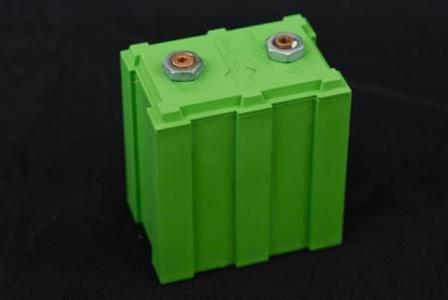Other Nonferrous Metals: Material-Specific Data
Other nonferrous metals such as lead, copper and zinc are found in durable products, including appliances and consumer electronics. Other than aluminum, lead in lead-acid batteries is the most prevalent nonferrous metal in municipal solid waste (MSW). In this analysis, EPA only includes lead-acid batteries from passenger cars, trucks and motorcycles but does not include lead-acid batteries used in large equipment or industrial applications.
This web page is a summary of nonferrous metal material-specific data. For more comprehensive information, see the 2018 Data Tables on the Advancing Sustainable Materials Management: Facts and Figures Report page.
On this page:
Overview
EPA measures the generation, recycling, composting, combustion with energy recovery and landfilling of other nonferrous metals in MSW.
 The generation of other nonferrous metals in MSW totaled 2.5 million tons in 2018. Lead in batteries accounted for approximately 1.7 million tons of this amount. As a percentage of total generation, other nonferrous metals were less than 1 percent in 2018.
The generation of other nonferrous metals in MSW totaled 2.5 million tons in 2018. Lead in batteries accounted for approximately 1.7 million tons of this amount. As a percentage of total generation, other nonferrous metals were less than 1 percent in 2018.
Recycling of other nonferrous metals was approximately 1.7 million tons in 2018, with recycling being due to lead recovered from batteries. In 2018, the estimated amount of recycled battery lead was about 99 percent.
The total amount of other nonferrous metal material in MSW that was combusted in 2018 was 80,000 tons. This was 0.2 percent of total MSW combustion with energy recovery that year.
Landfills received 740,000 tons of MSW other nonferrous metals in 2018. This was 0.5 percent of all MSW landfilled that year.
Please see the EPA Methodology Document for further information on estimating the generation and management of nonferrous metals.
Summary Table and Graph
The data below are from 1960 to 2018, relating to the total number of tons of nonferrous metals generated, recycled, composted, combusted with energy recovery and landfilled.
| Management Pathway | 1960 | 1970 | 1980 | 1990 | 2000 | 2005 | 2010 | 2015 | 2017 | 2018 |
|---|---|---|---|---|---|---|---|---|---|---|
| Generation | 180 | 670 | 1,160 | 1,100 | 1,600 | 1,860 | 2,020 | 2,010 | 2,510 | 2,510 |
| Recycled | - | 320 | 540 | 730 | 1,060 | 1,280 | 1,440 | 1,290 | 1,710 | 1,690 |
| Composted | - | - | - | - | - | - | - | - | - | - |
| Combustion with Energy Recovery | - | - | 20 | 60 | 50 | 50 | 60 | 60 | 70 | 80 |
| Landfilled | 180 | 350 | 600 | 310 | 490 | 530 | 520 | 660 | 730 | 740 |
Sources: Battery Council International, Census Bureau, and the National Automobile Dealers Association (for the lead-acid battery portion of nonferrous metals).
A dash in the table means that data is not available.
